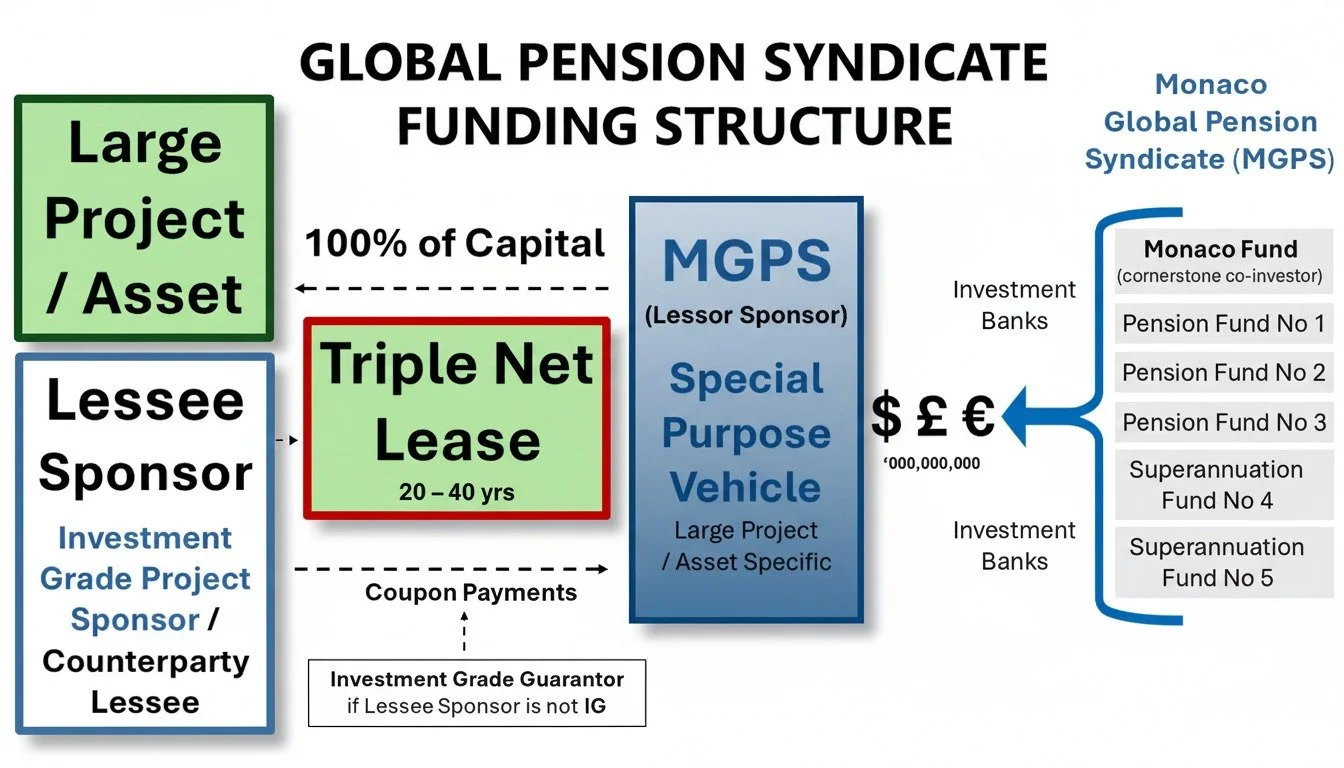100% Equity Financing
Global Pension Fund Syndicates
Funding 100% of Large Assets & Projects - Nil Debt
New Project Financing
100% of turnkey EPC costs are funded by Lessor Investor (Pension Fund Syndicate)
EPC contractor must be top tier or backed by A+ insurer
All construction and operational risks fully mitigated via guarantees and insurance
Pre-financing costs incurred can be recovered in full
EPC period lease payments are capitalised into full funded amount
Existing Asset Financing
Asset purchased outright at full market value
Lessee Sponsor receives immediate capital
Leaseback on same 20–40 years
Lessee Sponsor (Seller) retains full operational control
Optional reversion or buyback at lease expiry or other special event
Investment Grade
Under our funding model, the Lessee Sponsor or its guarantor must hold an investment grade rating from S&P or Moody’s to meet the strict credit requirements of global pension funds and institutional investors. This ensures that lease payment obligations are backed by a financially sound counterparty with a very low probability of default over the 20–40 year lease term.
Using only S&P and Moody’s ratings creates a consistent, internationally recognized benchmark for credit quality, aligning with institutional standards worldwide.
NNN Lease Structure
Fixed 20–40 year term with CPI-linked annual adjustments
Lessee Sponsor is contractually responsible for all taxes, insurance, maintenance, and operations
Lease payments combine a fixed yield component and principal amortization
Lessee Sponsor accrues 50% beneficial ownership over the term, with an agreed buyout mechanism for the remaining equity at inception
Syndicate Policy on Disclosure & Attribution
It is standard international practice and a foundational element of the syndication framework that only institutional investors with majority economic exposure are entitled to public attribution and recognition. Minor co-investors, particularly private entities, are contractually prohibited from disclosing or promoting their participation in such transactions, as any public claim to involvement would distort the perception of funding responsibility and undermine the accountability and integrity of publicly sourced capital. In this context, where public pension funds constitute the overwhelming share of investment (as is always the case in each MGPS), it is impermissible for private minority investors to seek visibility or credit, ensuring that recognition aligns with and preserves the public trust inherent in taxpayer-supported investments.


